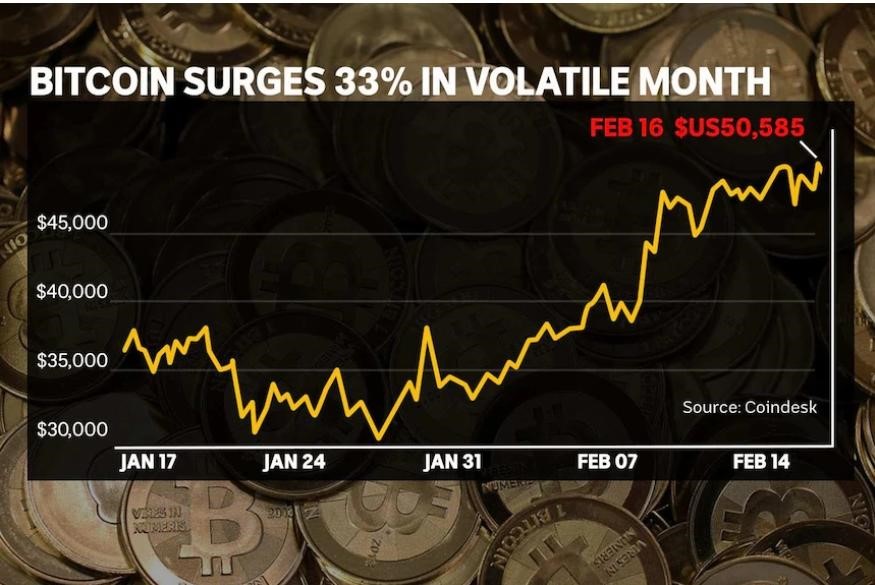A “bubble” is an investing term describing the market state when everyone has joined into an investment. The bubble fully inflates, but then once everyone is already in, it has expanded to the point where it cannot grow any further, and the crowd psychology then bursts into a panic. Due to fears of inflation, excitement for potential growth, and the hype of the crypto frenzy, the cryptocurrency market has been inflating beyond expectations for years. We are starting to ask, is crypto a bubble? This post will argue that it was, and it likely will be again, so remember, crypto investing is risky. Be cautious and use this post as a bit of a history lesson to predict the crazy future ahead.
Many of us are old enough to remember the housing bubble, some of us recall the dot-com bubble and older generations experienced the silver bubble. There have been a lot of bubbles, but let’s look at the most relevant – the dot-com bubble. The dot-com bubble was a stock market bubble caused by speculation in dotcom or internet-based businesses from 1995 to 2000. The frenzy of buying internet-based stocks was overwhelming, as many internet-based companies, so-called “dotcoms,” were starting up.
The companies largely had a “.com” domain on their internet address. The dot-com bubble (also known as the dot-com boom, the tech bubble, and the Internet bubble) was a stock market bubble caused by excessive speculation of Internet-related companies in the late 1990s, a period of massive growth in the use and adoption of the Internet. Since these companies were speculated to be a high-growth industry, they needed funding. Funding came primarily from venture capital firms, while lenders and individual investors also followed later.
As a result of these factors, many investors were eager to invest, at any valuation, in any dot-com company, especially if it had one of the Internet-related prefixes or a “.com” suffix in its name. Venture capital was easy to raise, and investment banks profited significantly from initial public offerings (IPO), fuelled speculation, and encouraged investment in technology. A combination of rapidly increasing stock prices in the internet sector and confidence that the companies would turn future profits created an environment in which many investors were willing to overlook traditional metrics. Investors ignored price to price-to-earnings ratio and based confidence solely on technological advancements, leading to a stock market bubble.
How a Bubble Works
Displacement
This stage occurs when investors notice a new paradigm, like a new product or technology, or historically low-interest rates. This can be basically anything that gets attention.
Boom
Prices start to rise. Then, they gain even more momentum as more investors enter the market. This sets up the stage for the boom. There is an overall sense of failing to jump in.
“on time,” causing even more people to start buying in.
Euphoria
When euphoria hits, and asset prices skyrocket, caution on the part of investors is mainly thrown out the window.
Profit-Taking
Figuring out when the bubble will burst isn’t easy; once a bubble has burst, it will not inflate again. But anyone identifying the early warning signs will make money by selling off positions in advance. This is difficult because it’s hard to know when they will burst, and it’s better to take some good profits while you’re guaranteed them. Conversely, “greedy” people wait too long in hopes of making even more profits and often end up selling while the stocks go down and losing money. Take what you can get when you see an inevitable burst coming.
Panic
Asset prices change course and drop (sometimes as rapidly as they rise). Investors want to liquidate them at any price. Asset prices decline as supply outweighs demand.
Causes of the Dotcom Crash
- Overvaluation of Dot-com Companies – Most tech and internet companies that held IPOs during the dot-com era were highly overvalued due to increasing demand and a lack of solid valuation models. High multipliers were used on tech company valuations, resulting in unrealistic values that were too optimistic.
- Abundance of Venture Capital – Money pouring into the funding of tech and internet company start-ups by venture capitalists and other investors was one of the major causes of the dot-com bubble. In addition, cheap funds obtainable through meager interest rates made capital easily accessible.
● Media Frenzy -Media companies encouraged people to invest in risky tech stocks by peddling overly optimistic expectations on future returns and the “get big fast” mantra. Business publications such as The Wall Street Journal, Forbes, Bloomberg, and many investment analysis publications spurred demand through their media outlets, fuelling a burning fire and further inflating the bubble. Alan Greenspan’s speech on “irrational exuberance” in December 1996 also set off the momentum of technological growth and buoyancy.
Bitcoin Climbs to $50,000 – Is it a ‘Crypto Bubble’
At the beginning of 2021, Bitcoin was selling for around $30,000. Many speculators claim just a 10x increase would bring the price of Bitcoin to $300,000. Bitcoin has had a blockbuster 2021 so far, with the cryptocurrency breaking multiple record levels this year and surpassing the $60,000 mark in March. Bitcoin’s success has pushed the value of other coins up to record levels, but does this mean they are valued at what speculations have predicted? Should we trust these valuations? Who are these crypto companies backing the currencies they are selling? It does seem that we are experiencing an echo of the past when anything with a “dot-com” sold for high rates; this time, it’s just anything with “crypto” or “blockchain” in its name is the mythical Golden Goose.

“It could go down by quite a bit, and that’s when the bubble bursts,” he said. “In the bitcoin crypto industry, we call it ‘bitcoin winter,’ and it can last from two to three years.” – Bobby Lee (co-founder and former CEO of crypto exchange BTCC)
Bitcoin history has shown that not only has it risen fast, but after each bubble, there is a burst, and it quickly falls. Bitcoin could lose 50% rapidly, and then it could be a bear market for the next two to three years. At times, it could even fall as much as 90% from previous highs.
How to Avoid Another Bubble
The measures below provide some insights on how to avoid another internet bubble:
1. Proper Due Diligence
Invest in new crypto-only after proper research; take a closer look at the company’s fundamental value drivers, such as cash flow generation and sound business models. Research and determine the long-term potential of the coin, and don’t get sucked into the hype of the short-term frenzy of buying and selling until you fully understand where money can be made. And, of course, consider the risks.
2. Removing “Investment of Expectation”
Investors should desist from investments based on unrealized potential in entities yet to prove their cash-flow generating ability and overall long-term sustainability. The expectations lead to the emergence of a bubble through speculation.
3. Avoid Companies with a High Beta Coefficient
Most tech stocks during the dot-com bubble posted high beta (greater than 1), meaning their downfall in times of recession would be much more than what the average market fall would be. A high beta coefficient signals a high-risk stock during a market downturn. Since the opposite is true when there is a market boom, investors should be wary of a bubble formation.
I’m a cautious cynic, so I should warn you that my perspective will always weigh the pros and cons and lean to the side of lower risk. I always see the negatives in every area, test the theories, and determine my best course of action and opinion. I do believe crypto is part of the future, but it’s hard to know if there is a fit in the broader market today. If crypto is just a place to keep money, it will pull back sooner rather than later. Like silver in the 1970s or dot-coms in the 1990s, I’m afraid that the general public has bought in “hook, line, and sinker”, and the moment there is trouble, they will all be selling out, making crypto fall back to their pre-2017 values. Time will tell, but for now, avoid scams by doing lots of intentional research. As of 2023, it does seem that crypto is levelling out, but I don’t trust that this is the end of the drop. There will be more to come in 2024, so let’s revisit this risky investment again in the future.
Subscribe for more business, sales, and investing posts. Have a lovely day!
Disclaimer
I want to make it unequivocally clear that I do not promote any cryptocurrency, nor do I endorse any crypto investments. This website is dedicated to providing information and insights into the world of cryptocurrencies to help you better understand what crypto is.
If you ever find yourself in a position where you need to explain your decision not to invest in cryptocurrencies to friends or acquaintances, you can use the content on this site as a guide to discourage people from falling victim to scams or making hasty financial decisions. My ultimate goal is to empower individuals with knowledge and awareness so that fewer people become financial victims.
Life is already challenging with its inherent obstacles; we don’t need the added burden of unscrupulous individuals looking to exploit our hard-earned money. Stay vigilant, stay informed, and make financial decisions with caution. Your financial well-being is of paramount importance, and it is my sincere hope that the information here can assist you in making prudent choices.











